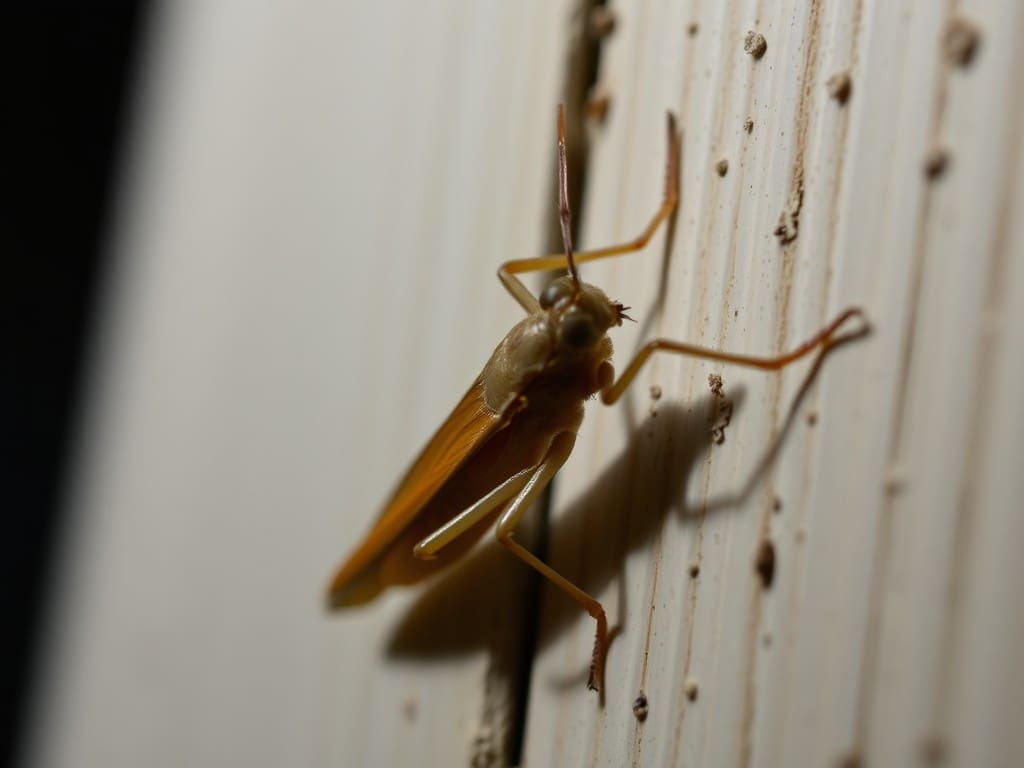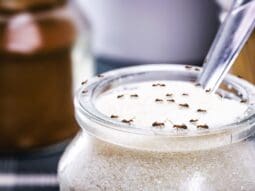
Crickets are a common sight and sound across the Southern United States, their chirps filling warm summer evenings with a distinctive and sometimes annoying "melody".
We'll explore the various species of crickets found in the South, their habitats, and the impact they have on both the environment and local communities. From their role as a food source for other animals to their significance in folklore and even cuisine, crickets have woven themselves into the fabric of Southern life.
Types of Crickets Found in the Southern US
The Southern US is home to a diverse array of cricket species, each with unique characteristics and behaviors. We'll explore three common types of crickets found in this region.
Field Crickets
Field crickets are abundant in the Southern US, thriving in grassy areas and agricultural fields. These dark-colored insects measure 0.5-1 inch in length and produce loud chirping sounds. Field crickets play a crucial role in the ecosystem as a food source for birds, reptiles, and small mammals.
House Crickets
House crickets, light brown in color and 0.75-1 inch long, often invade homes and buildings in the Southern US. They're attracted to warm, moist environments and can be found in kitchens, bathrooms, and basements. House crickets are omnivorous, feeding on various organic materials and occasionally damaging fabrics and paper products.
Mole Crickets
Mole crickets, distinct from other cricket species, are adapted for burrowing. These insects, measuring 1-1.5 inches in length, have powerful forelegs for digging and spend most of their time underground. Mole crickets can cause significant damage to lawns and golf courses in the Southern US by feeding on grass roots and creating tunnels that disrupt the soil surface.
Habitat and Distribution of Southern US Crickets
Crickets in the Southern United States thrive in diverse environments, adapting to various habitats across the region. Their distribution spans multiple states, with different species occupying specific niches within the ecosystem.
Preferred Environments
Southern US crickets inhabit a range of environments, each suited to their unique adaptations. Field crickets favor grassy areas, including meadows, pastures, and agricultural fields. House crickets often seek shelter in human structures, particularly in warm, moist areas like basements and crawl spaces. Mole crickets prefer sandy soils, making lawns, golf courses, and coastal regions ideal habitats. These insects also populate forests, wetlands, and urban green spaces, demonstrating their adaptability to various Southern ecosystems.
Geographic Range
The geographic range of crickets in the Southern US extends across multiple states, including:
| State | Common Cricket Species |
|---|---|
| Texas | Field crickets, House crickets, Mole crickets |
| Florida | Mole crickets, House crickets, Field crickets |
| Georgia | Field crickets, Tree crickets, Ground crickets |
| Louisiana | House crickets, Field crickets, Mole crickets |
| Alabama | Field crickets, Ground crickets, Tree crickets |
Crickets' distribution varies based on factors such as climate, vegetation, and urbanization. Coastal areas in Florida and the Gulf states host large populations of mole crickets, while inland regions support diverse field cricket species. Urban and suburban areas across the South provide ample opportunities for house crickets to thrive. The warm, humid climate of the Southern US creates ideal conditions for cricket populations to flourish throughout the region.
Cricket Behavior and Lifecycle in the South
Cricket behavior and lifecycle in the Southern US are influenced by the region's warm climate and diverse ecosystems. These insects exhibit fascinating adaptations and seasonal patterns that contribute to their success in various habitats across the South.
Mating and Reproduction
Southern crickets engage in complex mating rituals centered around their distinctive chirping. Male crickets produce these sounds by rubbing their wings together, a process called stridulation. This chirping serves as a mating call to attract females and ward off competing males. Female crickets typically lay 200-400 eggs in soil or plant matter, using their ovipositors to deposit eggs in safe locations. The eggs hatch into nymphs after 10-14 days, depending on environmental conditions. Nymphs undergo 8-10 molts over 6-8 weeks before reaching adulthood, shedding their exoskeletons to grow larger with each molt.
Seasonal Activity
Cricket activity in the South follows distinct seasonal patterns:
- Spring: As temperatures rise, overwintering eggs hatch and nymphs emerge.
- Summer: Peak activity period with intense mating, chirping, and population growth.
- Fall: Adult populations reach their highest numbers, with increased indoor invasions.
- Winter: Most species enter diapause or lay overwintering eggs to survive colder months.
Temperature plays a crucial role in cricket behavior, with increased activity during warmer periods. In the South's milder climate, some cricket species remain active year-round, particularly in coastal areas or urban heat islands. Rainfall patterns also influence cricket populations, with increased activity following periods of precipitation.
Managing Cricket Populations in Southern Homes and Gardens
Effective cricket management in Southern homes and gardens requires a combination of natural deterrents and professional pest control options. We'll explore strategies to keep cricket populations under control while minimizing environmental impact.
Natural Deterrents
Natural deterrents offer eco-friendly solutions for managing cricket populations. Diatomaceous earth, a fine powder made from fossilized algae, dehydrates crickets on contact when sprinkled around entry points and garden areas. Neem oil, derived from the neem tree, acts as a natural repellent and disrupts cricket feeding patterns. Planting cricket-repelling herbs like catnip, lemongrass, and citronella creates an aromatic barrier around homes and gardens. Maintaining a tidy yard by removing debris, fallen leaves, and excess moisture reduces attractive habitats for crickets. Installing yellow sodium vapor lights or LED bulbs instead of traditional white lights decreases the attraction of crickets to outdoor lighting.
Professional Pest Control Options
Professional pest control services, such as Romex Pest Control, provide targeted solutions for severe cricket infestations. Experienced technicians conduct thorough inspections to identify entry points and breeding areas. They employ integrated pest management techniques, combining chemical treatments with physical barriers and habitat modification. Residual insecticides applied to foundation perimeters and potential entry points create long-lasting protection. Granular baits placed strategically in garden areas attract and eliminate crickets before they reach homes. Professional-grade cricket traps, using pheromones or food attractants, capture large numbers of crickets without harmful chemicals. Regular maintenance visits ensure ongoing protection and allow for adjustments to treatment plans based on seasonal cricket activity patterns in the Southern US.
To Conclude
This year crickets have been particularly bad, especially in Texas, Louisiana, Mississippi and Oklahoma. They are particularly tough to treat through DIY methods. Your best chance to be free of crickets is through a professional pest control, like Romex Pest Control. Feel free to contact us to discuss your situation.
We hope you enjoy these informational articles. If you'd like to learn more about our eco-friendly pest control services, call (844) 955-2447.
Read More
Your Path to a Pest-Free Home or Business
Romex Pest Control
We are committed to protecting you, your children, and your pets with our eco-friendly, child-friendly, and pet-friendly guaranteed pest control solutions.
Romex Pest Control is fully insured and licensed in Texas, Oklahoma, Louisiana, and Mississippi.
Service Areas:
Hours
M-F 8 am–5 pm
Sat 8 am–2 pm
Sun Closed
Established 2016 © Copyright 2025 Romex Pest Control










